Getting to Know 11 Stadtmans
More Investigators Join the Stadtman Ranks
Meet 11 more investigators who have become part of the Earl Stadtman Tenure-Track Investigator Program. The program, which was launched in 2009 and named for the legendary biochemist who worked at NIH for 50 years, is designed to recruit a diverse group of talented, early-career scientists pursuing interests across the biomedical-research spectrum. Before 2009, each institute and center (IC) conducted its own searches to recruit new investigators. The ICs still do, but the trans-NIH Stadtman search is an additional hiring effort that may appeal to scientists who might not apply to more narrowly defined positions. When qualified candidates are identified, ICs that wish to increase their strength in the candidates’ areas of expertise will invite them for interviews and offer tenure-track positions. Each year, NIH aims to hire upward of 10 researchers through this prestigious program.
Six of the new Stadtmans work in the National Cancer Institute’s (NCI’s) Center for Cancer Research: Efsun Arda, Steven Cappell, Anupama Khare, Natalie Porat-Shliom, Sergio Ruiz Macias, and Joana Vidigal. Two work in NCI’s Division of Cancer Epidemiology and Genetics: Elizabeth (Lisa) Khaykin Cahoon and Mitchell Machiela. Two are in the National Institute of Dental and Craniofacial Research: Roxane Tussiwand and Achim Werner. And one works in the National Institute of Allergy and Infectious Disease: Eli Boritz.
Get to know them a bit in this issue of the NIH Catalyst. You’ll learn what they’re researching, what discoveries they’ve made, how they got interested in science, and even a few secrets.
. For more information about the Stadtman Tenure-Track Investigators program and how to apply, go to https://irp.nih.gov/careers/trans-nih-scientific-recruitments/stadtman-tenure-track-investigators.
EFSUN ARDA, PH.D., NCI-CCR
Earl Stadtman Investigator, Laboratory of Receptor Biology and Gene Expression, Center for Cancer Research, National Cancer Institute
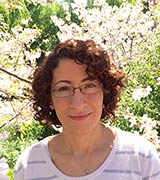
EDUCATION: University of Massachusetts Medical School, Worcester, Massachusetts (Ph.D. in systems biology); Boğaziçi University, Istanbul, Turkey (B.S. in molecular biology and genetics)
TRAINING: Postdoctoral researcher, Stanford University School of Medicine (Stanford, California)
CAME TO NIH: In 2017
WEBSITE: https://irp.nih.gov/pi/h-efsun-arda
Research focus: My group aims to understand the genomic basis of cell-fate determination, differentiation, and gene networks that maintain cell identity. We use the human pancreas as a model organ to study the mechanistic links between the genome and cell identity. Disorders of the pancreas including diabetes mellitus, pancreatitis, and pancreas cancer affect more than 10 percent of the world’s population. In the United States, pancreatic ductal adenocarcinoma ranks third among cancer-related deaths. We use high-throughput sequencing, single-cell analysis, and organoid technologies to identify the DNA sequences that are responsible for regulating pancreas-cell identity and function.
What would you say are your “greatest hits” in your career so far? In developmental biology, most people think about embryonic or fetal development; however, some of our organs continue to develop and mature well after birth. With the help of my colleagues, I showed that the hormone-producing cells—such as insulin-secreting beta cells—in the human pancreas continue their maturation after birth. We examined the gene expression and chromatin profiles of pancreas cells isolated from children and adults and found specific gene-expression programs that are turned on after the age of 10. Our study was the first to demonstrate these differences at a global level, and we uncovered new factors potentially mediating this process. (Cell Metab 23:909–920, 2016; DOI:10.1016/j.cmet.2016.04.002)
Motivated by my interest in genomic regulation, I continued to investigate the DNA elements that control pancreas-cell specification, identity, and function. My co-authors and I launched an effort to generate a comprehensive atlas of genomic elements specific to the main cell types in the human pancreas. I identified unique regions in our genomes that control cell-type-specific gene expression in human pancreas cells. These regions also turned out to harbor more disease-risk variants associated with diabetes or pancreas cancer than other parts of our genome. (Cell Syst 7:310–322.e4, 2018; DOI:10.1016/j.cels.2018.07.007)
What will be the impact of your work? My hope is that my group’s research will give us a more complete picture of why certain cells in the pancreas are more vulnerable to becoming cancerous. As a result, we may be able to develop preventative and diagnostic strategies as well as therapeutic treatments.
How did you get into your career? Growing up, I was always fascinated by the invention stories of famous inventors and scientists and loved experimenting with whatever I could find at home. My mother was a nurse practitioner, and I spent a great deal of time following her in the hospital and her colleagues in clinical laboratories. I think subconsciously that experience made me focus on biology and medicine. During grad school, I discovered the field of systems biology, and the idea of understanding how a system functions as a whole greatly appealed to me. In my postdoctoral work, I got to study the human pancreas and realized that there were several unanswered questions in the field that could be pursued with a systems approach.
What do you like to do outside of work? Cook for friends and family.
What about you would surprise most people? I am a very good bread baker.
Would you like to tell us anything else? NIH is a great place to kick start your career as a junior scientist. I am grateful and honored to be part of this community.
ELI BORITZ M.D., PH.D., NIAID
Earl Stadtman Investigator, Chief, Virus Persistence and Dynamics Section, Vaccine Research Center, National Institute of Allergy and Infectious Diseases
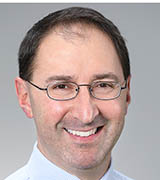
EDUCATION: University of Colorado Health Sciences Center, Denver (M.D.; Ph.D. in medicine and immunology); Williams College, Williamstown, Massachusetts (B.A. in biology)
TRAINING: Residency in internal medicine, Johns Hopkins Hospital (Baltimore); clinical fellowship in infectious diseases, NIAID; research fellowship in infectious diseases, VRC, NIAID
CAME TO NIH: In 2008 for training; became assistant clinical investigator in 2013
WEBSITE: https://www.irp.nih.gov/pi/eli-boritz
Research focus: I use single-cell analysis, high-throughput sequencing, and virus phylogenetics to elucidate the immunologic and virologic mechanisms that allow HIV to persist in vivo. My lab aims to contribute to global efforts toward better therapies for HIV infection, with an emphasis on curative therapies. We perform basic-science research using samples from HIV-positive people who are receiving standard-of-care antiretroviral therapy and, in some cases, experimental HIV cure-directed therapies.
What would you say are your “greatest hits” in your career so far? My best first-author paper was based on work I did as a fellow and assistant clinical investigator with Danny Douek at VRC. We used a combination of sequencing tools to track replicating HIV and the persistence of HIV-infected cells in people who had natural control of HIV. We were able to discern the contributions of multiple different cellular processes operating in vivo, and were pleasantly surprised to see how predictably our fundamental understanding of CD4 T-cell immunology could be mapped onto virologic data from distinct anatomic and functional immune compartments. (Cell 166:1004–1015, 2016; DOI:10.1016/j.cell.2016.06.039)
I would also cite work done by Liliana Perez, who was the first person to join my lab in 2017. Her initial project was to re-evaluate a prior study that had reported identification of a specific cell surface marker for CD4 T cells harboring latent HIV in vivo. She found that she was unable to reproduce the prior study and discovered an alternate explanation to account for that study’s findings. This was an important result that helped redirect the HIV cure field toward other avenues. (Nature 561:E9–E16, 2018; DOI:10.1038/s41586-018-0493-4)
What will be the significance of your work? I hope that my lab’s work will ultimately help the field to understand in increasing detail how HIV-infected CD4 T-cell populations persist in vivo despite innate and adaptive antiviral responses and despite antiretroviral therapy. The dream would be that some of this understanding can be translated into effective interventions directed at a cure. Accomplishments to date have achieved the much more modest goal of demonstrating how appropriate technology and analytical approaches can reveal useful patterns despite the tremendous complexity of HIV infection in vivo.
How did you choose a career in your field? My interest in a physician–scientist’s career grew from a love of the natural world that began in childhood. David Attenborough’s Life on Earth television series was a particular inspiration. Later, I gravitated toward biomedical science; an early volunteer experience with an uncle, who was a postdoctoral fellow, hooked me on lab science. Adding medicine began as a way of applying my enjoyment of research to my desire to serve others, but happily I also discovered deep rewards for myself in clinical practice. I considered branching away from HIV at multiple points during my career but could never shake my fascination with the virus and its interactions with the immune system.
What do you like to do outside of work? I enjoy spending time with my wife and children; running; and “conservation” gardening with Mid-Atlantic native plants.
What about you would surprise most people? During my 20s, I spent much of my free time playing competitive Ultimate Frisbee.
Would you like to tell us anything else? Serving as a PI at NIH is my dream job, and I’m frequently reminded how lucky I am to be able to do it for a living.
ELIZABETH (LISA) KHAYKIN CAHOON, PH.D., M.H.S., S.M., NCI-DCEG
Earl Stadtman Investigator, Radiation Epidemiology Branch, Division of Cancer Epidemiology and Genetics, National Cancer Institute
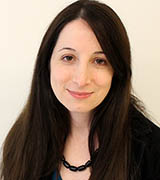
EDUCATION: Johns Hopkins Bloomberg School of Public Health, Baltimore (Ph.D. in epidemiology; M.H.S. in biostatistics); Massachusetts Institute of Technology, Cambridge, Massachusetts (S.M. in engineering); University of Pennsylvania, Philadelphia (B.S.E. in bioengineering)
TRAINING: Postdoctoral fellow, Department of Mental Health, Johns Hopkins Bloomberg School of Public Health; postdoctoral fellow, Radiation Epidemiology Branch, NCI-DCEG
CAME TO NIH: In 2010 for training; in 2014 became a research fellow
WEBSITE: https://www.irp.nih.gov/pi/elizabeth-cahoon
Research focus: My research is on cancer and precancer risks conferred by environmental sources of radiation exposure. In particular, my program focuses on 1) studies of preventable risk factors that modify the relationship between ultraviolet radiation (UVR) and the risk of skin cancer and other cancers (in the general population in the United States and in people with especially high risk such as organ-transplant recipients, and 2) studies that address unanswered questions about people exposed to ionizing radiation including residents and clean-up workers exposed after the Chernobyl accident (1986) and Japanese survivors of the atomic bombings (1945) of Hiroshima and Nagasaki.
What would you say are your “greatest hits” in your career so far? My group was the first to determine that the risk of Kaposi sarcoma (KS) was elevated among HIV-infected men who had a diagnosis of nonmelanoma skin cancer and in those living in locations with high ambient UVR at the time of HIV diagnosis (J Natl Cancer Inst 109(5):djw267, 2017; DOI:10.1093/jnci/djw267). In a follow-up study, I found that transplant recipients with diagnosis of other skin cancers were also at significantly elevated risk of KS (Int J Cancer 143:2741–2748, 2018; DOI:10.1002/ijc.31735).
With regard to ionizing radiation, I examined risk of lung cancer in the Life Span Study (LSS) of Japanese atomic-bomb survivors in an attempt to quantify the joint effects of radiation and smoking (Radiat Res 187:538–548, 2017; DOI:10.1667/RR14583.1). In another study, we examined the relationship between childhood radiation exposure from the Chernobyl Nuclear Power Plant accident (1986) and the development of thyroid disease and found that the radiation dose was significantly associated with increased risk of any thyroid nodule (J Clin Endocrinol Metab 102:2207–2217, 2017; DOI:10.1210/jc.2016-3842).
What is the significance of your work? If further research supports a causal relationship between UVR exposure and KS risk or progression, understanding the timing of UVR exposure in relation to KS could inform prevention strategies. My updated findings on lung cancer data from the LSS will serve as the basis for radiation-protection standards and risk-projection models, and data from the study may be used for evaluation of lung-cancer screening programs. My findings of radiation-related dose response and nodule risk add evidence of variation in radiation risk according to nodule type defined by a combination of ultrasonographic, cytological, and histological characteristics.
How did you choose a career in your field? I knew that I wanted to help people live happier, healthier lives. When I discovered the field of epidemiology, it seemed like a perfect fit for my love of mathematics and problem solving.
What do you like to do outside of work? Spending time with my family outdoors; gardening. I think gardening appeals to both my practical nature and my scientific curiosity and serves a substitute for a lack of laboratory work in my day-to-day life.
What about you might surprise most people? I am originally from Tbilisi, Georgia. My family immigrated when I was a child.
STEVEN CAPPELL, PH.D., NCI-CCR
Earl Stadtman Investigator, Laboratory of Cancer Biology and Genetics, Center for Cancer Research, National Cancer Institute
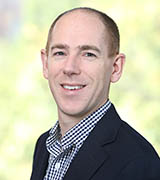
EDUCATION: University of North Carolina at Chapel Hill, Chapel Hill, North Carolina (Ph.D. in pharmacology); University of Miami, Coral Gables, Florida (B.S. in biology and marine science)
TRAINING: Postdoctoral fellowship in chemical and systems biology, Stanford University (Stanford, California)
CAME TO NIH: In 2017
WEBSITE: https://irp.nih.gov/pi/steven-cappell
Research focus: Our lab is interested in understanding how cells make the decision to proliferate. We are using live-cell imaging, quantitative single-cell analysis, and fluorescent biosensors to explore the regulatory circuits in normal cells and how these circuits are rewired in the context of mutations and cancer. We are also developing new tools and biosensors to study the cell cycle, with a particular focus on E3 ubiquitin ligases.
What would you say are your “greatest hits” in your career so far? During my postdoc, I developed a method to measure the activity of E3 ubiquitin ligases inside live cells. Until recently, most live-cell fluorescent reporters were developed for kinases or to measure metabolites, but my work outlines the first method to measure ubiquitin ligases, which are critical regulators of signaling pathways. This breakthrough allowed us to study the dynamics of anaphase-promoting complex (APC) regulation in single cells and in real time. (Cell 166:167–180, 2016; DOI:10.1016/j.cell.2016.05.077)
The foundational discovery of my lab is the identification of the point of no return for cell-cycle commitment. It had been widely thought for many years that cells become committed to the cell cycle at a point called the “restriction point,” but I showed during my postdoc that DNA damage can induce cells to exit the cell cycle even after the restriction point. Rather, cells become committed to the cell cycle when the ubiquitin ligase APC gets inactivated. This discovery has important implications for not only our basic understanding of the cell cycle but also for new drugs currently being developed to target proteins involved in cell-cycle commitment. (Nature 558:313–317, 2018; DOI:10.1038/s41586-018-0199-7)
Your undergrad degree was in biology and marine science. How did you wind up in your current field? Growing up, I always wanted to become a marine biologist. I was inspired by nature documentaries such as the Discovery Channel series Shark Week as well as scuba diving trips to the Caribbean. I was enamored by an entire unexplored ecosystem hiding beneath the surface, and I wanted to become a scientist to try and understand more about it. In college while pursuing a degree in marine biology, I learned about how marine corals and marine sponges produce toxins and other natural products that they use to inhibit the growth of nearby marine organisms in order to complete for space on rocks and substrates. Some of these marine natural products were found to have potent anticancer properties and were being developed as new chemotherapies.
I found that a toxin from a marine sponge collected off the Florida coast can inhibit the growth of adrenal carcinoma cells by blocking mitosis and inhibiting the cell cycle. Surprisingly, the toxins produced by corals can affect signaling pathways in human cells even though millions of years of evolution separate humans from corals. I found this idea really fascinating, and it led me to pursue a Ph.D. in pharmacology, which is essentially the study of how chemicals affect intracellular signaling pathways. During my Ph.D. training I also remained interested in understanding the regulation of the cell cycle. Indeed, during my Ph.D., during my postdoc, and now in my current role as a principle investigator at the NIH, I have sought to understand how the cell cycle is regulated, first in the model organism yeast, then in normal human cells, and now in cancer cells.
What do you like to do outside of work? I enjoy spending time with my wife and two young children. I also enjoy hiking and nature photography and more recently I’ve gotten into woodworking. I recently built a kitchen table, patio furniture, a coffee table, and a bed.
What about you would surprise most people? While on vacation I love seeking out adventure. I’ve swum with great white sharks (Cape Town, South Africa), picked up a rattlesnake with my bare hands (in the Mojave Desert), and was charged by a grizzly bear (in Alaska).
Would you like to tell us anything else? My wife also works at the NIH as an oncology fellow in the Medical Oncology Branch. Her expertise and knowledge about current clinical practices and shortcomings in the treatment of cancer is an invaluable asset because it allows me to continuously think about how our basic research could be translated to the clinic.
ANUPAMA KHARE, PH.D., NCI-CCR
Earl Stadtman Investigator, Laboratory of Molecular Biology, Center for Cancer Research, National Cancer Institute

EDUCATION: Baylor College of Medicine, Houston (Ph.D. in molecular and human genetics); St. Xavier’s College, Mumbai, India (B.Sc. in life sciences and biochemistry)
TRAINING: Postdoctoral training at Baylor College of Medicine; postdoctoral research scientist, Princeton (Princeton, New Jersey) and Columbia University (New York)
BEFORE COMING TO NIH: Associate research scientist, Columbia University
CAME TO NIH: In 2017
WEBSITE: https://irp.nih.gov/pi/anupama-khare
Research focus: My lab is using systems-biology approaches to study the molecules and mechanisms that underlie complex microbial behaviors including polymicrobial interactions. Understanding these interactions is a critical first step in designing novel therapeutics. Polymicrobial infections are commonly seen in people with cystic fibrosis, in whom interactions between the pathogens Pseudomonas aeruginosa and Staphylococcus aureus are thought to affect the severity of persistent lung infections. We are also interested in identifying the determinants of the early steps of the evolution of antibiotic resistance and characterizing these as potential targets for novel antimicrobials that can inhibit the rise of resistant bacteria.
What would you say are your “greatest hits” in your career so far? In my graduate studies, I was studying cooperation and competition in the model system Dictyostelium discoideum, a social amoeba. In this species, under conditions of starvation, the population cooperatively forms a multicellular structure in which a small proportion of cells dies to promote the survival of the rest of the population. This cooperative system is exploited by “cheaters” that take advantage of the cooperation without incurring any of the costs and can thus lead to the collapse of the system. I proposed and demonstrated a novel form of cheater control wherein the presence of cheaters in a population selects for cheater-resistant mutants that are able to resist the cheater and thus maintain the cooperative system. (Nature 461:980–982, 2009)
In my postdoctoral work, I established a framework to analyze all the cellular pathways that underlie a specific interaction between two different bacterial species, unlike most previous studies that focused on only one class of molecules. Gaining such a systematic understanding of interactions among bacterial species is a first step toward developing novel therapies to modulate clinically important microbial communities. (PLoS Genet 11:e1005715, 2015)
How did you choose your career? My parents are both scientists (as is my brother), which may explain how my love for science first started. Mathematics and science, especially biology, were my favorite subjects in school. I really enjoyed learning about Mendelian genetics in high school; more in-depth exposure to cell biology, evolution, and genetics in college fueled my interest in molecular biology, especially as it pertains to microbiology.
What do you like to do outside of work? Play with my kids (one and five years old), read books, and go on family vacations involving hiking and dining.
MITCHELL MACHIELA, SC.D., NCI-DCEG
Earl Stadtman Investigator, Integrative Tumor Epidemiology Branch, Division of Cancer Epidemiology and Genetics, National Cancer Institute
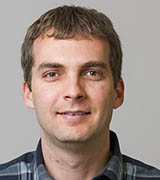
EDUCATION: Harvard T.H. Chan School of Public Health, Boston (Sc.D. in epidemiology); University of Michigan School of Public Health, Ann Arbor, Michigan (M.P.H.); Calvin College, Grand Rapids, Michigan (B.A. in biology and in Spanish)
TRAINING: Postdoctoral fellow, Laboratory of Genetic Susceptibility, NCI-DCEG
CAME TO NIH: In 2012 for training; in 2016 became a research fellow
WEBSITE: https://irp.nih.gov/pi/mitchell-machiela
Research focus: My lab is studying the role of germ-line variation and somatic mosaicism (a mixture of normal and mutated cells) in cancer risk. I am leading studies of large-scale genetic mosaicism to investigate the causes of acquired mosaic alterations and their impact on cancer risk. My lab also conducts and analyzes genetic association studies to elucidate the underlying genetic architecture of pediatric and common adult cancers.
What would you say are your “greatest hits” in your career so far? My most cited paper is a web tool I developed to help scientists study how inherited variants located nearby on a chromosome are correlated with each other and how these correlation patterns vary by ancestry. The tool, LDlink, was intended to be a simple online reference for lab biologists and expanded from there. LDlink is available at http://ldlink.nci.nih.gov and has had over 280,000 pageviews and users from 145 different countries. (Bioinformatics 31:3555–3557, 2015; DOI:10.1093/bioinformatics/btv402)
Another great hit is my first published genome-wide association study as a first author. The study was of Ewing sarcoma, a rare bone tumor characterized by recurrent genetic fusions. I found exciting interactions between inherited variation and genomic sites where the fusion oncoprotiens bind and affect nearby gene expression. The study described how common inherited variation could have large effect sizes for a rare tumor and has been a springboard for a substantially larger genomic investigation of Ewing sarcoma. (Nat Commun 9:3184, 2018; DOI:10.1038/s41467-018-05537-2)
My personal favorite is one of the first papers I published at NCI as a research highlight on genome-wide association studies in dogs. It was a fun change of pace to write an article on man’s best friend that included details on Frisbee catching, narcolepsy, and extending a paw to help humans map complex diseases. The crowning achievement was getting a picture of my PI’s dog as the cover photo. It was certainly one of my greatest hits. (Genome Biol 15:105, 2014; DOI:10.1186/gb4166)
What is the significance of your work? Perhaps the greatest impact of my work will be findings that normal tissues from healthy donors have an unanticipated high amount of mutations. We find evidence for large gains, deletions, and loss of heterozygosity events on human autosomes (chromosomes 1–22) and sex chromosomes (X and Y). Interestingly, some of these mutations are the same as those seen in cancers, yet these individuals are healthy and do not have cancer. These mutations increase in frequency with age and are evidence of our genome slowly eroding into a complex mosaic of mutated clones.
How did you get interested in your particular field? I have always had an interest in science but never really considered a career in science until an undergraduate summer research program. It was a fascinating experience to use high-tech equipment and computer programing to learn something new about biology. After I graduated, I worked in a pathologist’s lab that performed gene-expression profiling (using custom microarrays we made in house!). The experience was fantastic, but I realized I needed more training in statistics to analyze high-dimensional data. I went to graduate school to get a master’s degree and ended up in a great cancer genomics lab. I enjoyed the research so the natural next step was to go on to get a doctoral degree in genetic epidemiology. My doctoral research focused on genetic association studies in prostate cancer. In my postdoc at NCI, I performed many studies that used genotyping data (which is normally used to study inherited variation) to investigate acquired mutations. Combined, these experiences have shaped me and led me to my current field of research studying the genetic etiology of cancer.
What do you like to do outside of work? Cycling; going on adventures with my wife and kids.
What about you would surprise most people? I have four kids!
NATALIE PORAT-SHLIOM, PH.D., NCI-CCR
Earl Stadtman Investigator, Thoracic and Gastrointestinal Malignancies Branch, Center for Cancer Research, National Cancer Institute
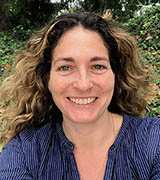
EDUCATION: Tel Aviv University, Tel Aviv, Israel (M.Sc. in neurobiology; B.Sc. in biology), and the Graduate Partnership Program at NIH (Ph.D. in cell biology) in conjunction with Tel Aviv University
CAME TO NIH: In 2005 as part of the NIH Graduate Partnership Program; returned in 2011 for postdoctoral trainingTRAINING: Postdoctoral research fellow in NCI-CCR’s Laboratory of Cellular and Molecular Biology and in NIDCR’s Intracellular Membrane Trafficking Section
WEBSITE: https://irp.nih.gov/pi/natalie-porat-shliom
Research focus: My lab aims to understand how cells sense and adapt to changes in nutrients. In particular, we are interested in the dynamic rearrangement of mitochondria and other cellular organelles in response to changes in nutrients and the bioenergetic consequences. We use light and intravital microscopy of hepatocytes in the liver. Understanding how nutrient availability affects organelle dynamics, and in turn cellular metabolism, is an exciting frontier that opens new directions for therapeutic approaches.
What would you say are your “greatest hits” in your career so far? Mitochondria are undergoing continuous rearrangement in their morphology, positioning, and interactions with other organelles. During my postdoctoral training, I became interested in the role of mitochondrial dynamics in cellular metabolism and organ physiology. My group discovered that in exocrine tissues (tissue that make up glands the secrete substances by way of a duct such as sweat, salivary, and mammary glands), mitochondria have a conserved distribution and consist of distinct populations that exhibit different dynamic properties and functions. I developed intravital microscopy approaches for imaging cells in intact tissues of live, anesthetized mice. Imaging cells in their natural habitat is challenging but critically important because many factors in the cell’s environment affect their behavior. (Citations: iScience 11:440–449, 2019; Cell Rep 9:514–521, 2014; Cell Syst 4:277–290, 2017; Hepatology 64:1317–1329, 2016)
What is the impact of your work? Using intravital microscopy to observe biological processes in live animals at high resolution, we can reveal the dynamic nature of cellular processes, their location within the tissue, and the specific cells participating. This approach is particularly powerful in disease models such as cancer.
What caused you to choose a career in medicine; how did you choose your particular field? As a biology undergrad, I was fascinated by understanding how things work. In my master’s program in neurobiology, I used a fluorescence microscope for the first time. It was amazing to be able to directly observe protein localization and dynamics. At that time, signal transduction from endosomes was drawing a lot of attention so I decided to focus on that for my Ph.D. thesis. As a graduate student, I fell in love with microscopy and cell biology and cell physiology, so the choice to pursue postdoctoral training and later a faculty position in these fields came naturally. Having great mentors along the way was extremely important in my career choices, and I am grateful for them.
What do you like to do outside of work? I love hanging out with my son; keeping active (running, hiking, and scuba diving); reading; traveling; creating and observing art; and listening to live music.
What about you would surprise most people? I sing out loud while I’m driving.
Would you like to tell us anything else? The environment has great impact on cells and also on scientists. Collaborative, communicative, and supportive space is the recipe for creative, high-quality science.
SERGIO RUIZ MACIAS, PH.D., NCI-CCR
Earl Stadtman Investigator, Laboratory of Genome Integrity, Center for Cancer Research, National Cancer Institute
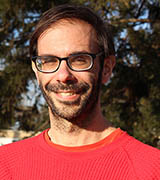
EDUCATION: University Complutense, Madrid (Ph.D. in biochemistry and molecular biology; undergraduate degree in biological sciences)
TRAINING: Postdoctoral fellowships at Centro de Investigación del Cáncer (Salamanca, Spain) and at the Salk Institute for Biological Studies (La Jolla, California)
BEFORE COMING TO NIH: Staff scientist, Spanish National Cancer Research Center (Madrid)
CAME TO NIH: In 2018
WEBSITE: https://irp.nih.gov/pi/sergio-ruiz-macias
Research focus: My lab is interested in understanding the molecular mechanisms driving cell-fate decisions. For our research, we use human and mouse embryonic stem cells as well as mouse embryos to study cell plasticity, pluripotency, and differentiation. We leverage the use of these in in vitro and in vivo models to get a better comprehension of embryonic development, cell transformation, and cancer.
What would you say are your “greatest hits” in your career so far? I think I would prefer to let my peers decide what my “greatest hits” are. Instead, I will tell you about the two pieces of work I am proud of:
1) During my postdoc at the Salk Institute I identified a specific reprogramming-associated epigenetic signature in human induced-pluripotent stem cells (iPSCs). I observed that there was a pattern of epigenetic aberrancies common to all iPSC lines independent of their somatic origin or method of reprogramming resulting in differential gene expression. Nowadays, this phenomenon has yet-unclear consequences. (PNAS 109:16196–16201, 2012)
2) When I was a staff scientist at the Spanish National Cancer Research Center, I used a CRISPR-Cas9-based screen in mouse embryonic stem cells (ESCs) to explore the existence of genes providing resistance to the inhibition of the DNA-damage-response ataxia telangiectasia and Rad3-related protein (ATR) kinase. (ATR kinase can potentially halt the development of tumors.) I identified cdc25a as a gene that when knocked-out conferred full resistance to ATR inhibition. In consequence, I proposed that the concentration of cdc25a would be a great biomarker to predict the selective killing of cancer cells by using ATR inhibitors. (Mol Cell 62:307–313, 2016)
What will be the significance of your work? I tried to make an impact in understanding the basis of cell plasticity and the molecular mechanisms underlying pluripotency and self-renewal. Still, my goal at the NIH will be to make more contributions to get a better comprehension of how a single cell can unleash the potential to develop into a whole complex organism of billions of cells.
How did you choose a career in your field? I have always been interested in doing research, and I guess that being curious by nature helped me in choosing a career in science. In fact, as far back as I remember I fantasized about being in a lab doing experiments. I feel that by saying what I am going to say is a cliché, but I remember perfectly the piece of work that changed my scientific “fate.” In the summer of 2006 I read the Cell paper by Kazutoshi Takahashi and Shinya Yamanaka describing the conversion of fibroblasts into iPSCs. After reading that manuscript I knew that I wanted to understand the underlying biology of that process. A few months later, I was accepted to work in the laboratory of Juan Carlos Izpisua-Belmonte at the Salk Institute, where I started working with ESCs and iPSCs.
What do you like to do outside of work? Besides the classics (going to the movies, reading books, and traveling as much as I can), I love to hike up mountains, play simple videogames, listen to any kind of live music, play squash, or swim in open water.
What about you would surprise most people? I play the mandolin (after many years of self-learning); I am addicted to jigsaw puzzles (I even participated at the Spanish National Competition); I have backpacked in more than 50 countries.
ROXANE TUSSIWAND, PH.D., NIDCR
Earl Stadtman Investigator, Immune Regulation Unit, Immunology and Inflammation Branch, National Institute of Dental and Craniofacial Research
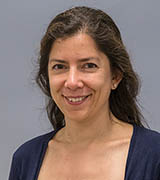
EDUCATION: University Vita e Salute San Raffaele in Milan/Institute for Research in Biomedicine in Bellinzona, Switzerland (Ph.D. in molecular medicine); University of Milan, Milan (B.S. in biology)
TRAINING: Postdoctoral training at the University of Basel (Basel, Switzerland); postdoctoral training at Washington University School of Medicine (St. Louis) in transcriptional regulation of dendritic cell development
BEFORE COMING TO NIH: Assistant professor at the University of Basel
CAME TO NIH: In 2019
WEBSITE: https://www.nidcr.nih.gov/research/research-conducted-by-nidcr/investigators/roxane-tussiwand-phd
Research focus: My group focuses on understanding how transcription factors modulate the differentiation of hematopoietic stem cells into mature immune cells. Myeloid cells and in particular dendritic cells (DCs) are key players of the immune system and are responsible for shaping the immune response to pathogens. We are defining the cues that lead to lineage specification and determining the functional properties of the different DC subsets under normal and pathologic conditions.
What would you say are your “greatest hits” in your career so far? The activator protein transcription factor (B-ATF-3) is required for the development of a subset of DCs that are responsible for priming cytotoxic CD8 T cells. This DC subset drives immunity to intracellular pathogens and is essential for the clearance of cancer cells. We identified an alternative, B-ATF-3-independent pathway, which, during infection with intracellular pathogens and through the action of the cytokines interleukin 12 and interferon-gamma, leads to the expansion of these DCs. This alternative pathway may provide a basis for augmenting therapeutic immune responses. (Nature 490:502–507, 2012; DOI:10.1038/nature11531)
We also identified a new subset of antigen-presenting cells—plasmacytoid dendritic cells (pDC)–like cells—which share transcriptional and functional features with both pDCs and conventional dendritic cells (cDCs). Both myeloid and lymphoid pDC subsets secrete type-1 interferons, but only myeloid-derived pDCs share with cDCs their ability to process and present antigens. Our findings may explain how mature pDCs, including pDC-like cells, may induce antitumor responses in clinical trials with patients who have melanoma. (Nature Immunol 19:711–722, 2018; DOI:10.1038/s41590-018-0136-9)
What is the significance of your work? We are trying to uncover the intrinsic and extrinsic factors that define the commitment of hematopoietic stem cells into highly specialized progeny. The ability to modulate immune responses by shaping the environment may open novel therapeutic avenues in the context of autoimmune syndromes, infections, and cancer.
What caused you to choose a career in medicine? When I was eight years old, my little brother was diagnosed with an early pre-B-cell leukemia. I wanted to understand what was happening. From that moment on, I began dedicating my time and energy to shedding light on normal and pathologic biological processes.
What do you like to do outside of work? Nature and art. I enjoy admiring nature in all its forms and shapes, whether it is an animal running by or curiously looking at you, an insect deciding to have a moment of rest, a flower blooming, or a leaf falling. I recently started to explore nature underwater, enjoying free diving when possible. What is life without art in all its expressions?
What about you would surprise most people? I hope we never stop surprising each other.
Would you like to tell us anything else? I hope we would move faster toward a world in which humanity is the only thing that matters, without borders or prejudice, respecting each other and everything round us.
JOANA VIDIGAL, PH.D., NCI-CCR
Earl Stadtman Investigator, Laboratory of Biochemistry and Molecular Biology, Center for Cancer Research, National Cancer Institute

EDUCATION: Free University of Berlin, Berlin, and Max-Planck Institute for Molecular Genetics, Berlin (Ph.D.); University of Lisbon, Lisbon, Portugal (Licenciatura in biology, specialization in microbiology and genetics)
TRAINING: Postdoctoral fellow in cancer biology and genetics, Memorial Sloan-Kettering Cancer Center (New York)
CAME TO NIH: In 2018
WEBSITE: https://irp.nih.gov/pi/joana-vidigal
Research focus: I am trying to understand what roles noncoding RNAs perform in the cell, how their activity is regulated, and how their dysfunction contributes to human disease. My lab is particularly interested in studying the role of small noncoding RNAs, especially those that interact with components of the microRNA (miRNA) pathway. We and others have shown that miRNAs are causally implicated in the etiology of a variety of human diseases, from human developmental syndromes to cancer. Yet, the molecular basis of miRNA’s impact on human health is not well understood. Our lab addresses this question using a multidisciplinary approach that relies heavily on the use of genetically engineered mouse models in combination with biochemical, high-throughput, and computational approaches.
What would you say are your “greatest hits” in your career so far? There are two studies that I am particularly proud of. The first one is from my postdoc. I was interested in studying the physiological roles of miRNAs in mammals, and because of my background in mouse genetics thought the best approach to do so was by studying animals in which specific miRNAs had been deleted. I focused on the microRNA cluster 1, including Mir17 through Mir92 (Mirc1) gene because its deregulation had previously been implicated in both human development and tumorigenesis. In both mice and humans, this gene expresses not one but six distinct miRNAs that can be grouped into four distinct regulatory families. My question was simple: How does each of these regulatory families contribute to the phenotypes we associate with deregulation of the whole gene? In collaboration with two colleagues in the lab, I used genetically engineered mouse models in which each of the families had been specifically deleted and studied what consequence that modification had, both in animal development and in Myc-driven tumorigenesis. To our surprise, we found that different families had specialized functions: The Mir17 family was essential for patterning of the body during embryogenesis, while the Mir19 family was essential for tumor progression. (Nat Genet 47:766–775, 2015).
The work above highlights how powerful genetic tools can be in assigning function to noncoding RNA genes. However, it relied on very slow and low-throughput techniques. One of the goals of my lab is to develop strategies to perform these studies on a large scale. Toward this goal, we have been adapting CRISPR gene-editing tools to our research needs. In my lab, we described a computational strategy to deal with one of the biggest challenges in using CRISPR gene editing to identify essential noncoding sequences: how to deal with the noise generated by unspecific guide RNAs. By using machine learning we are able to predict how off-targets affect guide-RNA performance in high-throughput screens, and using that information we can estimate the importance of on-target cleavage to cell viability. We are now using this strategy to identify essential sequences in miRNA-mediated phenotypes. (bioRxiv, a non-peer-reviewed preprint server, 2019; DOI:10.1101/809970)
What will be the impact of your work? It perhaps is too early to say what the impact of our work will be. What I can say is that we are trying to understand gene regulatory mechanisms that we know are important for human health. By doing so, we hope not only to increase our knowledge of the principles that ensure robust developmental decisions but also figure out how their disruption can lead to disease. This knowledge may become the first step toward more effective therapeutic strategies.
Aside from this, my laboratory is committed to making our work, and the reagents and tools we develop, publicly available so that other researchers can benefit from it for their own projects. Hopefully, doing so means that the impact of our work will extend beyond our immediate area of research.
How did you choose a career in your field? I have always been interested in science, and I think that’s in large part because of my dad. When my siblings and I were growing up, he would always try to explain to us how the natural world worked. Why do we see only one side of the moon? Or how come we can syphon liquids using a hose? Or how do airplanes fly? His constant questions and explanations piqued my curiosity and contributed in no small part to my decision to pursue research as a career. I decided to study biology in university and went on to do a Ph.D. in developmental genetics at the Max-Planck Institute in Berlin. My Ph.D. project was pretty technical. The goal was to take advantage of the newly discovered RNA interference phenomenon to silence genes in the mouse embryo so that we could understand their function.
What I became obsessed with during this time was the fact that in mice, this catalytic activity is absolutely essential for animal viability and yet we don’t really know why! To try to understand this, I accepted a postdoctoral position at Memorial Sloan Kettering Cancer Center in New York. There, I learned how to use mouse models to dissect the function of the canonical small RNA partners of Argonaute proteins in mammals, the miRNAs. Now in my own lab, we study how Argonaute proteins regulate animal physiology both through pathways that require catalytic activity and those that are independent of it.
What do you like to do outside of work? I love being outdoors. In the summer, I spend as much time as I can at the beach. I absolutely love the sun, and the water, and feeling the salt on my skin. In the winter I go as often as I can to a mountain to ski or snowboard.
What about you would surprise most people? I have a twin brother.
Would you like to tell us anything else? I am the only one in my family who went into science or who has a Ph.D. My dad studied mechanical engineering in university and then joined EDP (the Portuguese electricity company). My mom studied history in university and taught history to high-school students. She is also a very talented artist and for a while did illustrations for books. She even did the cover art for a review I wrote as a postdoc! I have two siblings: a twin brother who like my father studies mechanical engineering, and a sister who like my mother is a talented artist and makes jewelry.
ACHIM WERNER, PH.D., NIDCR
Earl Stadtman Investigator, Craniofacial, Developmental, Cell, and Matrix Biology, National Institute of Dental and Craniofacial Research
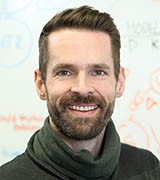
EDUCATION: International Max Planck Research School Molecular Biology, University of Göttingen, Göttingen, Germany (M.Sc. and Ph.D. in molecular biology and biochemistry); University of Lübeck, Lübeck, Germany (B.Sc. in molecular life science)
TRAINING: Postdoctoral fellow in molecular and cell biology, University of California at Berkeley (Berkeley, California)
CAME TO NIH: In 2017
WEBSITE: https://www.nidcr.nih.gov/research/research-conducted-by-nidcr/achim-werner-phd
Research focus: My lab focuses on understanding how stem cells use the essential post-translational modifier ubiquitin to determine cell-fate choices during human development, in particular those involved in neural crest, craniofacial, and neuronal differentiation. We tackle our research questions by combining human genetics, human embryonic stem cell (hESC) culture, proteomic approaches, and biochemical approaches. Results from our studies will provide molecular insights into important aspects of human development and into the origin of developmental diseases, which will be useful for developing novel therapeutic approaches.
What would you say are your “greatest hits” in your career so far? During my graduate studies I discovered a ubiquitin-dependent pathway that regulates actin-based cell-shape changes required for faithful cell-cycle progression (Nat Cell Biol 15:179–188, 2013). During my postdoctoral work, I identified a novel regulatory circuit that controls the function of newly synthesized ribosomes to allow stem cells to adopt a neural-crest cell fate during differentiation (Nature 525:523–527, 2015). Intriguingly, this adoption occurs through ubiquitin-dependent assembly of ribosome-biogenesis platforms that drive neural-crest formation during hESC and Xenopus frog development. The importance of this regulation is underscored by the fact that genetic lesions in the essential substrate of this pathway, treacle protein, result in Treacher Collins syndrome, a genetic disorder characterized by facial deformities.
What will be the impact of your work? I am a biochemist by training who uses hESCs as a model system to study ubiquitin-dependent cell-fate decisions during development. Since I started at NIH, I have been closely collaborating with David Beck, a human geneticist from Daniel Kastner’s group (National Human Genome Research Institute), to understand how mutations in ubiquitylation enzymes cause developmental and autoinflammatory diseases. We are combining our expertise in biochemistry, proteomics, and stem-cell culture with human genetics and animal modeling, and I am confident that the results of our collaborative efforts will elucidate novel pathways that regulate important aspects of human development, provide clear genetic diagnosis for patients and families, and contribute to the development of novel therapeutic approaches.
What caused you to choose a career in medicine? I fell in love with research centering on post-translational modification with small proteins during my graduate studies when I attended lectures given by Frauke Melchior, one of the pioneers of the field of small ubiquitin-like modifier (SUMO) proteins. Inspired by her exciting research topic, her talent for conceptualizing difficult ideas, and her passion for the scientific discovery process, I decided to join her lab for my graduate work and have continued to work in the SUMO and ubiquitin field ever since.
What do you like to do outside of work? I like to stay active and to play pretty much any kind of sport that involves hand-eye coordination. My current favorites are tennis and volleyball.
What about you would surprise most people? I played in a recorder quartet until I was 17 years old and made quite a bit of money on the side playing at different events, especially during Christmas time.
Would you like to tell us anything else? I am truly grateful to be part of the Stadtman program here at NIH. Having a peer group of fellow investigators has helped me tremendously in making the transition from postdoc to group leader. Through many interactions with other Stadtman fellows, I was able to better handle the day-to-day challenges of setting up my own lab, establishing research collaborations, and, most importantly, quickly making friends.
This page was last updated on Tuesday, March 29, 2022
